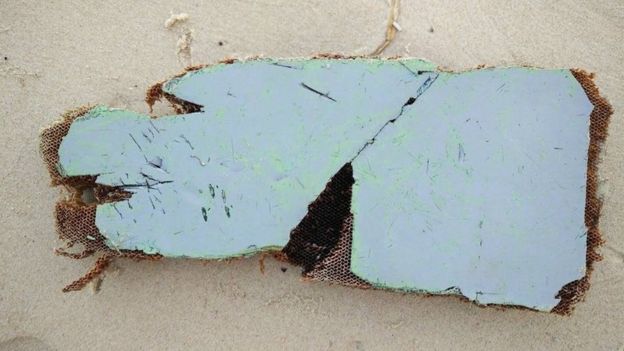Families of the victims of flight MH370 say a decision to halt the search for the Malaysian airliner that vanished in March 2014 is “irresponsible”.
Voice370 said the search ought to be expanded – it was “an inescapable duty owed to the flying public”.
The plane vanished en route to Beijing from Kuala Lumpur with 239 on board.
More than 120,000 sq km (46,300 miles) of the Indian Ocean has been searched with no results. Pieces of debris have been found as far away as Madagascar.
But only seven have been identified as definitely or highly likely to be from the Boeing 777.
There were 14 nationalities among the 227 passengers and 12 crew on board the plane. The majority – 153 people – were Chinese.
What next? Analysis by Richard Westcott, BBC Transport Correspondent
The underwater search discovered new volcanoes, anchors, long lost ships. Its sonar mapped an area of seabed less well known than the surface of the Moon. The sea gave up many secrets but it didn’t give up MH370.
There were false alarms. At one point the search team rang the prime minister of Australia and told him to get ready to make an announcement. But when they sent down cameras on a drone to look at the odd shaped lump, they just found another ship wreck.
The experts on the boats had to cope with some of the worst weather on Earth, many days sailing from help. No helicopter could reach where they were looking.
They were desperate to solve this mystery, but drew a blank.
So what next?
The pain of not knowing is as sharp for the families as it was two years ago and they will lobby hard to keep looking. New scientific drift analysis suggests that MH370 came down slightly further north of where they were looking. There is a chance that private companies could fund a new search. Maybe Boeing?
But for now the hunt for MH370 is all but over, leaving the way open for internet “theorists” to fill in the blanks.
Mysteries like this never fade.
Announcing the suspension, Australia, Malaysia and China said “no new information has been discovered to determine the specific location of the aircraft” despite numerous studies.
They remained hopeful this would happen in the future.

However, Voice370, a family support group, said the search must continue and be extended to include an area of some 25,000 sq km north of the current one, recommended by a report released by the Australian Transport Safety Bureau last December.
“Stopping at this stage is nothing short of irresponsible, and betrays a shocking lack of faith in the data, tools and recommendations of an array of official experts assembled by the authorities themselves.”
A report in November 2016 said the plane probably made a “high and increasing rate of descent” into the Indian Ocean.